Spatially Resolved Spectral Imaging by A THz-FEL
Abstract
1. Introduction
2. Characteristics of the ISIR THz-FEL
3. Spectral Imaging Using THz-FEL
3.1. Optical Scheme and Beam Profile
3.2. Spectral Imaging of Solid Samples
3.2.1. Pellets
3.2.2. Composite Materials with A Fine Structure
3.2.3. Opaque Systems
3.2.4. Leaves
4. Conclusions
Author Contributions
Funding
Acknowledgments
Conflicts of Interest
Appendix A
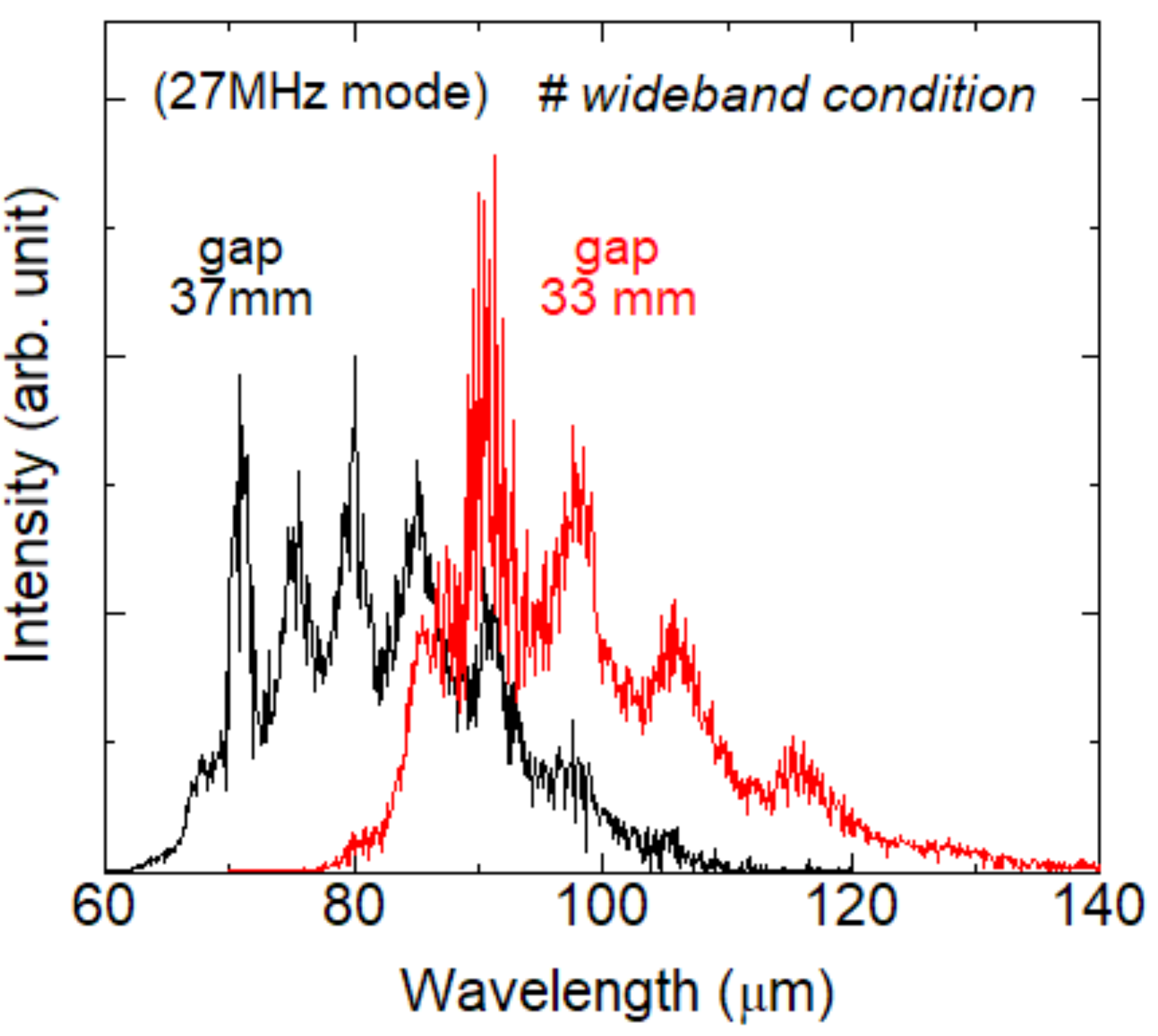
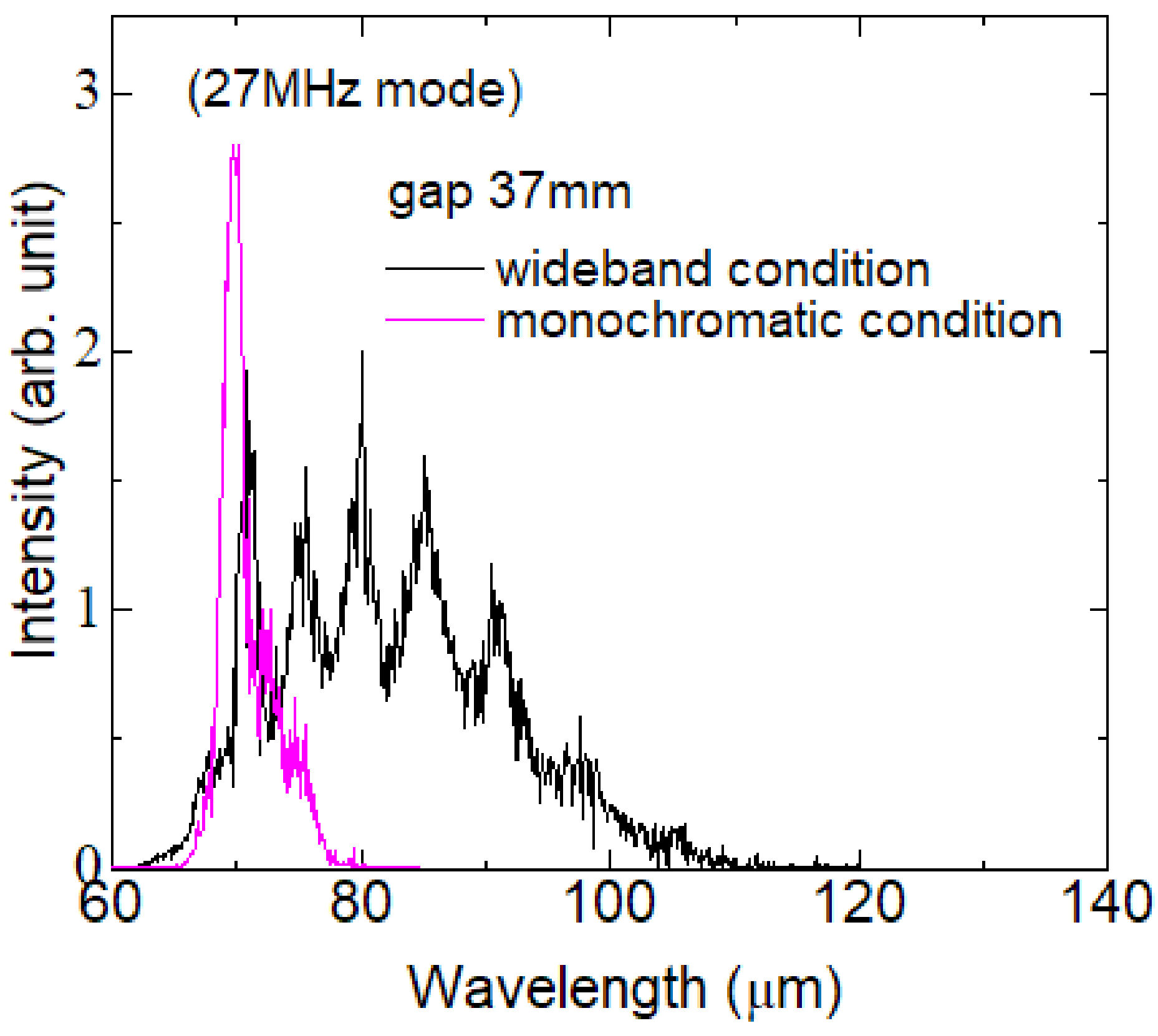
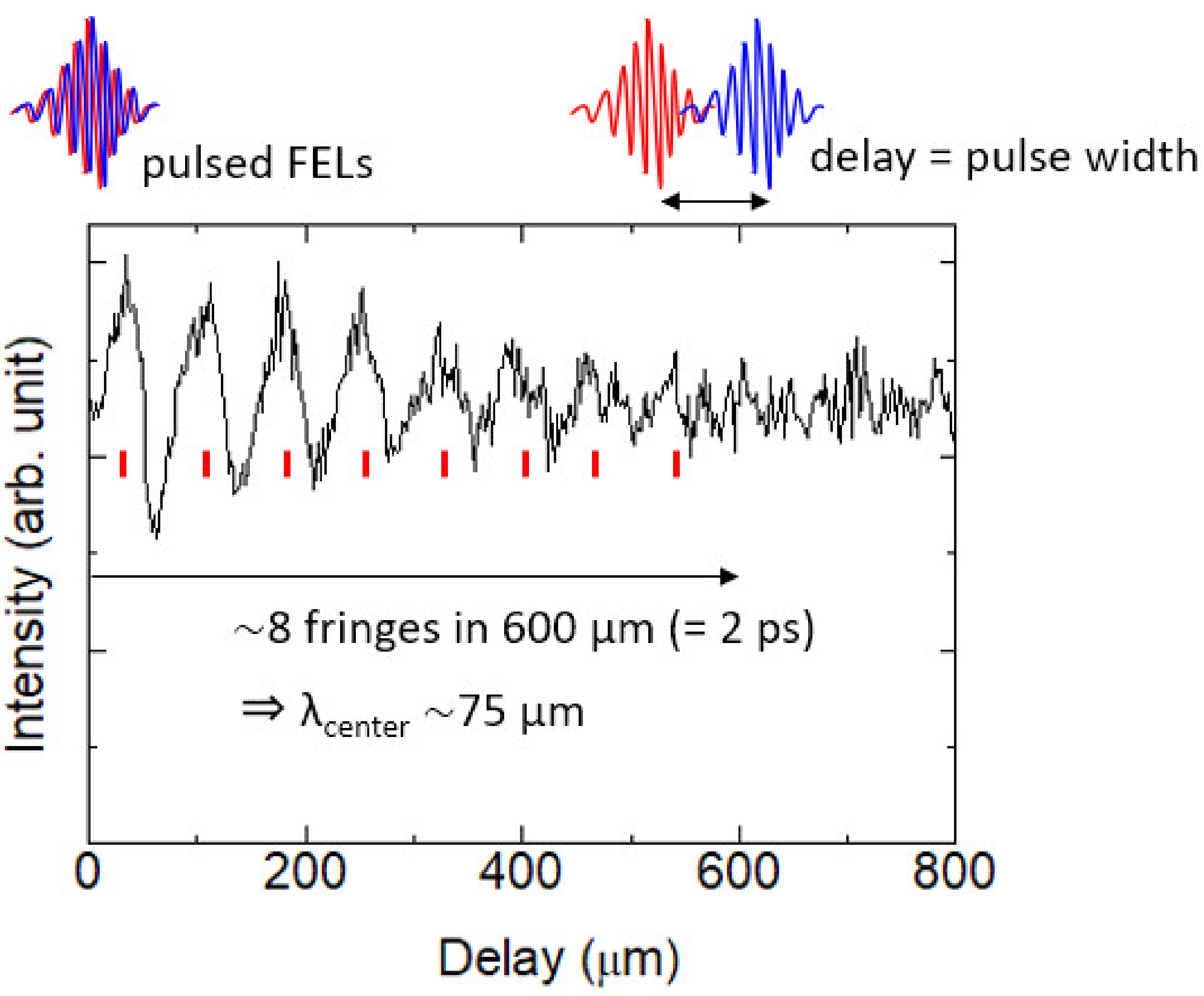
References
- Hoshina, H.; Suzuki, H.; Otani, C.; Nagai, M.; Kawase, K.; Irizawa, A.; Isoyama, G. Polymer morphological change induced by terahertz irradiation. Sci. Rep. 2016, 6, 27180. [Google Scholar] [CrossRef] [PubMed]
- Nagai, M.; Aono, S.; Ashida, M.; Kawase, K.; Irizawa, A.; Isoyama, G. Luminescence induced by electrons outside zinc oxide nanoparticles driven by intense terahertz pulse trains. New J. Phys. 2017, 19, 053017. [Google Scholar] [CrossRef]
- Irizawa, A.; Suga, S.; Nagashima, T.; Higashiya, A.; Hashida, M.; Sakabe, S. Laser-induced fine structures on silicon exposed to THz-FEL. Appl. Phys. Lett. 2017, 111, 251602. [Google Scholar] [CrossRef]
- Kawasaki, T.; Tsukiyama, K.; Irizawa, A. Dissolution of a fibrous peptide by terahertz free electron laser. Sci. Rep. 2019, 9, 1–8. [Google Scholar] [CrossRef]
- Deacon, D.; Elias, L.R.; Madey, J.-M.J.; Ramian, G.J.; Schwettman, H.A.; Smith, T.I. First operation of a free-electron laser. Phys. Rev. Lett. 1977, 38, 892. [Google Scholar] [CrossRef]
- Shintake, T.; Tanaka, H.; Hara, T.; Tanaka, T.; Togawa, K.; Yabashi, M.; Otake, Y.; Asano, Y.; Bizen, T.; Fukui, T.; et al. A compact free-electron laser for generating coherent radiation in the extreme ultraviolet region. Nat. Photonics 2008, 2, 555–559. [Google Scholar] [CrossRef]
- Ishikawa, T.; Aoyagi, H.; Asaka, T.; Asano, Y.; Azumi, N.; Bizen, T.; Ego, H.; Fukami, K.; Fukui, T.; Furukawa, Y.; et al. A compact X-ray free-electron laser emitting in the sub-angstrom region. Nat. Photonics 2012, 6, 540–544. [Google Scholar] [CrossRef]
- Perucchi, A.; Mitri, S.D.; Penco, G.; Allaria, E.; Lupi, S. The TeraFERMI terahertz source at the seeded FERMI free-electron-laser facility. Rev. Sci. Instrum. 2013, 84, 022702. [Google Scholar] [CrossRef]
- Chiadroni, E.; Bacci, A.; Bellaveglia, M.; Boscolo, M.; Castellano, M.; Cultrera, L.; Di Pirro, G.; Ferrario, M.; Ficcadenti, L.; Filippetto, D.; et al. The SPARC linear accelerator based terahertz source. Appl. Phys. Lett. 2013, 102, 094101. [Google Scholar] [CrossRef]
- Buakor, K.; Chaisueb, N.; Rimjaem, S.; Saisut, J.; Thongbai, C.; Damminsek, K.; Thongpakdi, W. Development of linac-based MIR/THz FEL facility and photocathode RF-gun in Thailand. Proc. IPAC2017 2017, WEPAB083, 2763–2766. [Google Scholar]
- Miginsky, S.; Jang, K.H.; Gudkov, B.; Bae, S.; Jeong, Y.U.; Mun, J.; Lee, K.; Park, S.H.; Setiniyaz, S. A compact THz FEL at KAERI: The Project and the Status. Proc. FEL2017 2017, MOP048, 156–157. [Google Scholar]
- Li, H.-T.; Jia, Q.-K.; Zhang, S.-C.; Wang, L.; Yang, Y.-L. Design of FELiChEM: The first infrared free-electron laser user facility in China. Chinese Phys. C 2017, 41, 018102. [Google Scholar] [CrossRef]
- Okuda, S.; Honda, Y.; Kimura, N.; Ohkuma, J.; Yamamoto, T.; Suemine, S.; Okada, T.; Ishida, S.; Takeda, S.; Tsumori, K.; et al. Free-electron laser oscillation with a multibunch electron beam of the 38 MeV L-band linear accelerator at ISIR. Nucl. Instrum. Meth. A 1995, 358, 244–247. [Google Scholar] [CrossRef]
- Kato, R.; Kondo, S.; Igo, T.; Okita, T.; Konishi, T.; Suemine, S.; Okuda, S.; Isoyama, G. Lasing at 150 μm wavelength and measurement of the characteristics of the free-electron laser at ISIR Osaka University. Nucl. Instrum. Meth. A 2000, 445, 169–172. [Google Scholar] [CrossRef]
- Kashiwagi, S.; Kato, R.; Mihara, A.; Noda, T.; Isoyama, G.; Tsuchiya, K.; Shioya, T.; Yamamoto, S. Rigorous evaluation of the edge-focusing wiggler based on the magnetic field measurement. Phys. Rev. Spec. Top. Accel. Beams 2009, 12, 120703. [Google Scholar] [CrossRef]
- Kawase, K.; Kato, R.; Irizawa, A.; Fujimoto, M.; Kashiwagi, S.; Yamamoto, S.; Kamitsukasa, F.; Osumi, H.; Yaguchi, M.; Tokuchi, A.; et al. The high-power operation of a terahertz free-electron laser based on a normal conducting RF linac using beam conditioning. Nucl. Instrum. Meth. A 2013, 726, 96–103. [Google Scholar] [CrossRef]
- Suemine, S.; Kawase, K.; Sugimoto, N.; Kashiwagi, S.; Furukawa, K.; Kato, R.; Irizawa, A.; Fujimoto, M.; Ohsumi, H.; Yaguchi, M.; et al. Grid pulser for an electron gun with a thermionic cathode for the high-power operation of a terahertz free-electron laser. Nucl. Instrum. Meth. A 2015, 773, 97–103. [Google Scholar] [CrossRef]
- Tokuchi, A.; Kamitsukasa, F.; Furukawa, K.; Kawase, K.; Kato, R.; Irizawa, A.; Fujimoto, M.; Osumi, H.; Funakoshi, S.; Tsutsumi, R.; et al. Development of a high-power solid-state switch using static induction thyristors for a klystron modulator. Nucl. Instrum. Meth. A 2015, 769, 72–78. [Google Scholar] [CrossRef]
- Pham, H.H.N.; Hisatake, S.; Minin, O.V.; Nagatsuma, T.; Minin, I.V. Enhancement of spatial resolution of terahertz imaging systems based on terajet generation by dielectric cube. Appl. Phys. Lett. 2017, 2, 056106. [Google Scholar]
- Guerboukha, H.; Nallappan, K.; Skorobogatiy, M. Toward real-time terahertz imaging. Adv. Opt. Photon. 2018, 10, 843–938. [Google Scholar] [CrossRef]
- Smolyanskaya, O.A.; Chernomyrdin, N.V.; Konovko, A.A.; Zaytsev, K.I.; Ozheredov, I.A.; Cherkasova, O.P.; Nazarov, M.M.; Guillet, J.-P.; Kozlov, S.A.; Kistenev, Y.V.; et al. Terahertz biophotonics as a tool for studies of dielectric and spectral properties of biological tissues and liquids. Prog. Quantum Electron. 2018, 62, 1–77. [Google Scholar] [CrossRef]
- Chernomyrdin, N.V.; Kucheryavenko, A.S.; Kolontaeva, G.S.; Katyba, G.M.; Dolganova, I.N.; Karalkin, P.A.; Ponomarev, D.S.; Kurlov, V.N.; Reshetov, I.V.; Skorobogatiy, M.; et al. Reflection-mode continuous-wave 0.15λ-resolution terahertz solid immersion microscopy of soft biological tissues. Appl. Phys. Lett. 2018, 113, 111102. [Google Scholar] [CrossRef]
- Dolganova, I.N.; Zaytsev, K.I.; Yurchenko, S.O.; Karasik, V.E.; Tuchin, V.V. The Role of Scattering in Quasi-Ordered Structures for Terahertz Imaging: Local Order Can Increase an Image Quality. IEEE Trans. Terahertz Sci. Technol. 2018, 8, 403–409. [Google Scholar] [CrossRef]
- Zaytsev, K.I.; Dolganova, I.N.; Chernomyrdin, N.V.; Katyba, G.M.; Gavdush, A.A.; Cherkasova, O.P.; Komandin, G.A.; Shchedrina, M.A.; Khodan, A.N.; Ponomarev, D.S.; et al. The progress and perspectives of terahertz technology for diagnosis of neoplasms: A review. J. Opt. 2020, 22, 013001. [Google Scholar] [CrossRef]
- Angeluts, A.A.; Balakin, A.V.; Evdokimov, M.G.; Esaulkov, M.N.; Nazarov, M.M.; Ozheredov, I.A.; Sapozhnikov, D.A.; Solyankin, P.M.; Cherkasova, O.P.; Shkurinov, A.P. Characteristic responses of biological and nanoscale systems in the terahertz frequency range. Quantum Electron. 2014, 44, 614. [Google Scholar] [CrossRef]
- Murate, K.; Kawase, K. Perspective: Terahertz wave parametric generator and its applications. J. Appl. Phys. 2018, 124, 160901. [Google Scholar] [CrossRef]
- Kimura, S.; Nakamura, E.; Yamazaki, J.; Katoh, M.; Nishi, T.; Okamura, H.; Matsunami, M.; Chen, L.; Nanba, T. New infrared and terahertz beam Line BL6B at UVSOR. AIP Conf. Proc. 2004, CP705, 416–419. [Google Scholar]
- Irizawa, A.; Suga, S.; Isoyama, G.; Shimai, K.; Sato, K.; Iizuka, K.; Nanba, T.; Higashiya, A.; Niitaka, S.; Takagi, H. Direct observation of a pressure-induced metal-insulator transition in LiV2O4 by optical studies. Phys. Rev. B 2011, 84, 235116. [Google Scholar] [CrossRef]
- Marcelli, A.; Cinque, G. Infrared synchrotron radiation beamlines: High brilliance tools for IR spectromicroscopy. A practical guide to the characteristics of the broadband and brilliant non-thermal sources. In Biomedical Applications of Synchrotron Infrared Microspectroscopy; Moss, D., Ed.; Royal Society of Chemistry: London, UK, 2011; Chapter 3; pp. 67–104. [Google Scholar]
- Oda, N.; Sudou, T.; Ishi, T.; Okubo, S.; Isoyama, G.; Irizawa, A.; Kawase, K.; Kato, R. Externally triggered imaging technique for microbolometer-type terahertz imager. In Proc. SPIE 9856, Terahertz Physics, Devices, and Systems X: Advanced Applications in Industry and Defense; SPIE: Bellingham, WA, USA, 2016; p. 98560I. [Google Scholar]
- Kashiwagi, S.; Isoyama, G.; Kato, R.; Suemine, S. Development of a precise timing system for the ISIR L-band linac at Osaka University. Proc. FEL 2007 2007, WEPPH030, 413–416. [Google Scholar]
- Terahertz Inspection of Agricultural Products. Available online: https://terasense.com/applications/terahertz-agriculture/ (accessed on 24 April 2020).
- Kawase, K.; Nagai, M.; Furukawa, K.; Fujimoto, M.; Kato, R.; Honda, Y.; Isoyama, G. Extremely high-intensity operation of a THz free-electron laser using an electron beam with a higher bunch charge. Nucl. Instrum. Meth. A 2020, 960, 163582. [Google Scholar] [CrossRef]
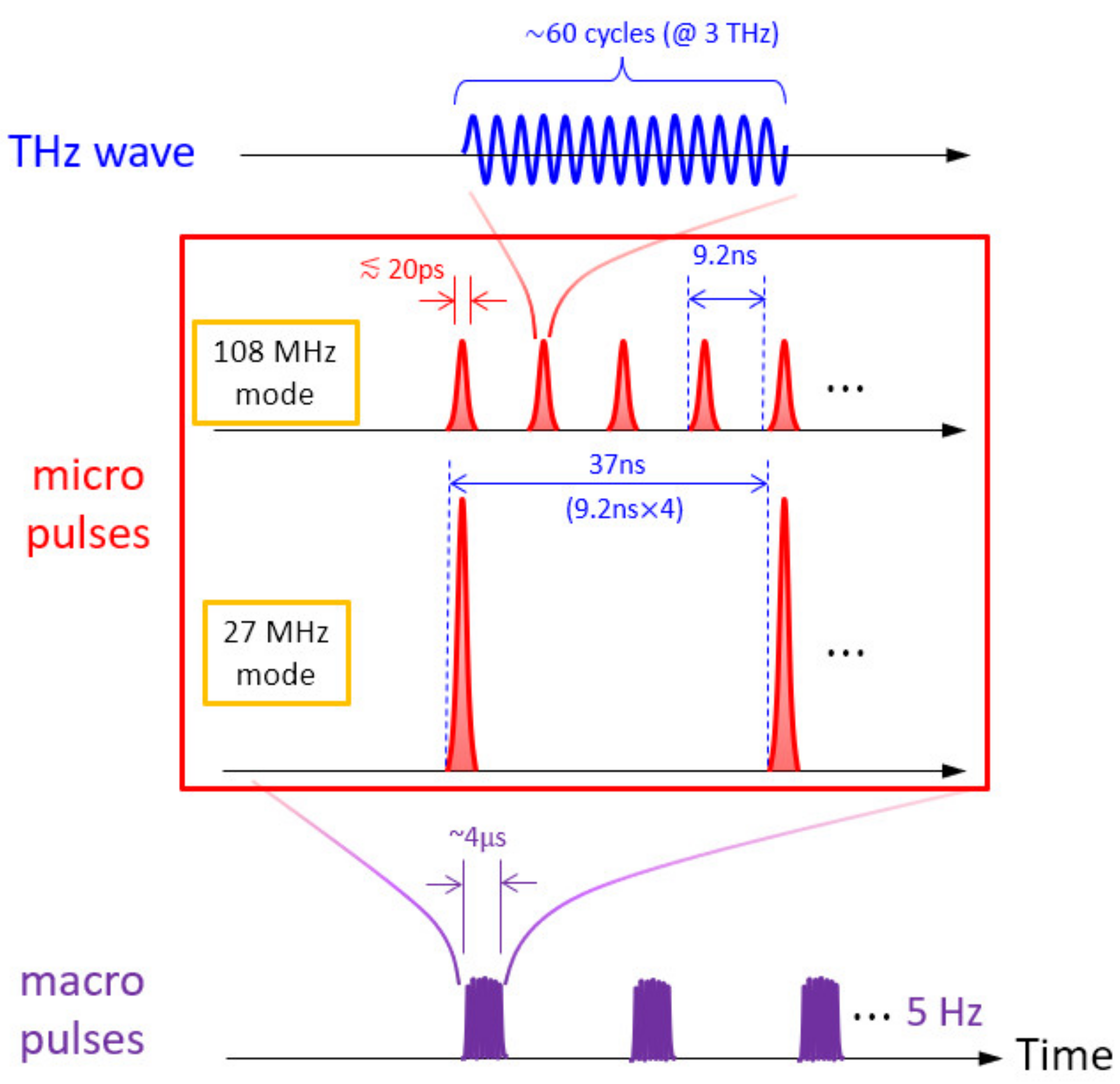
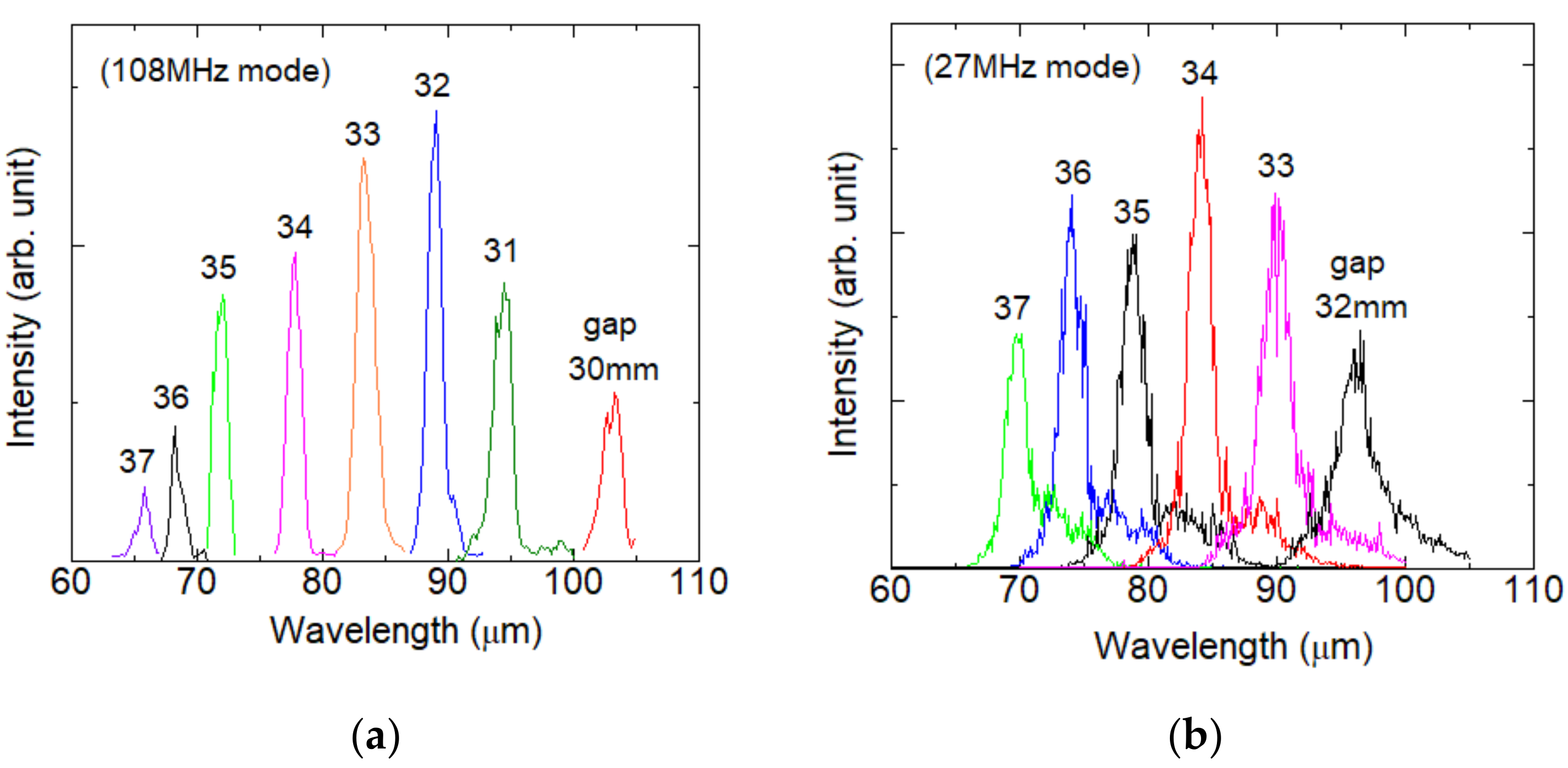
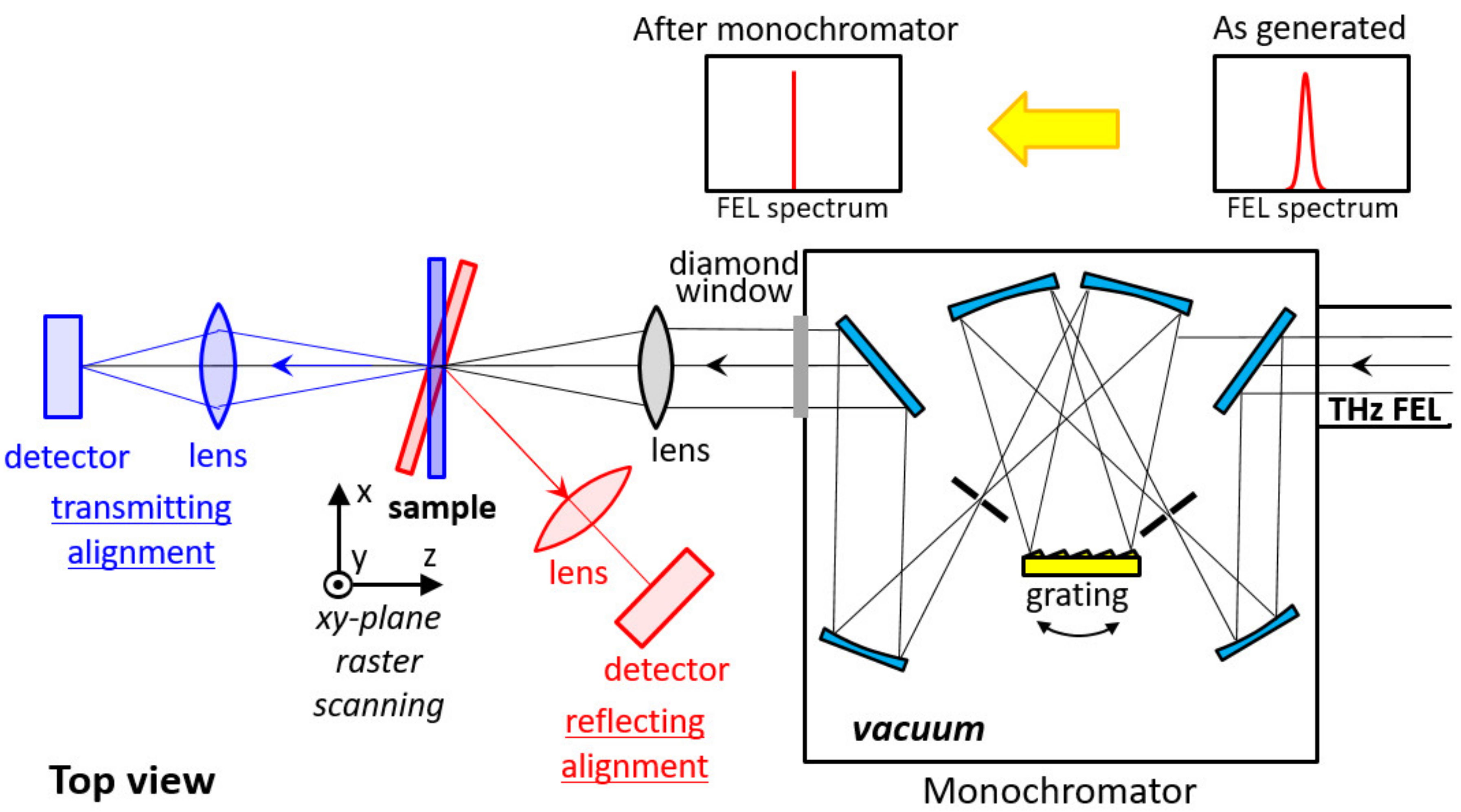
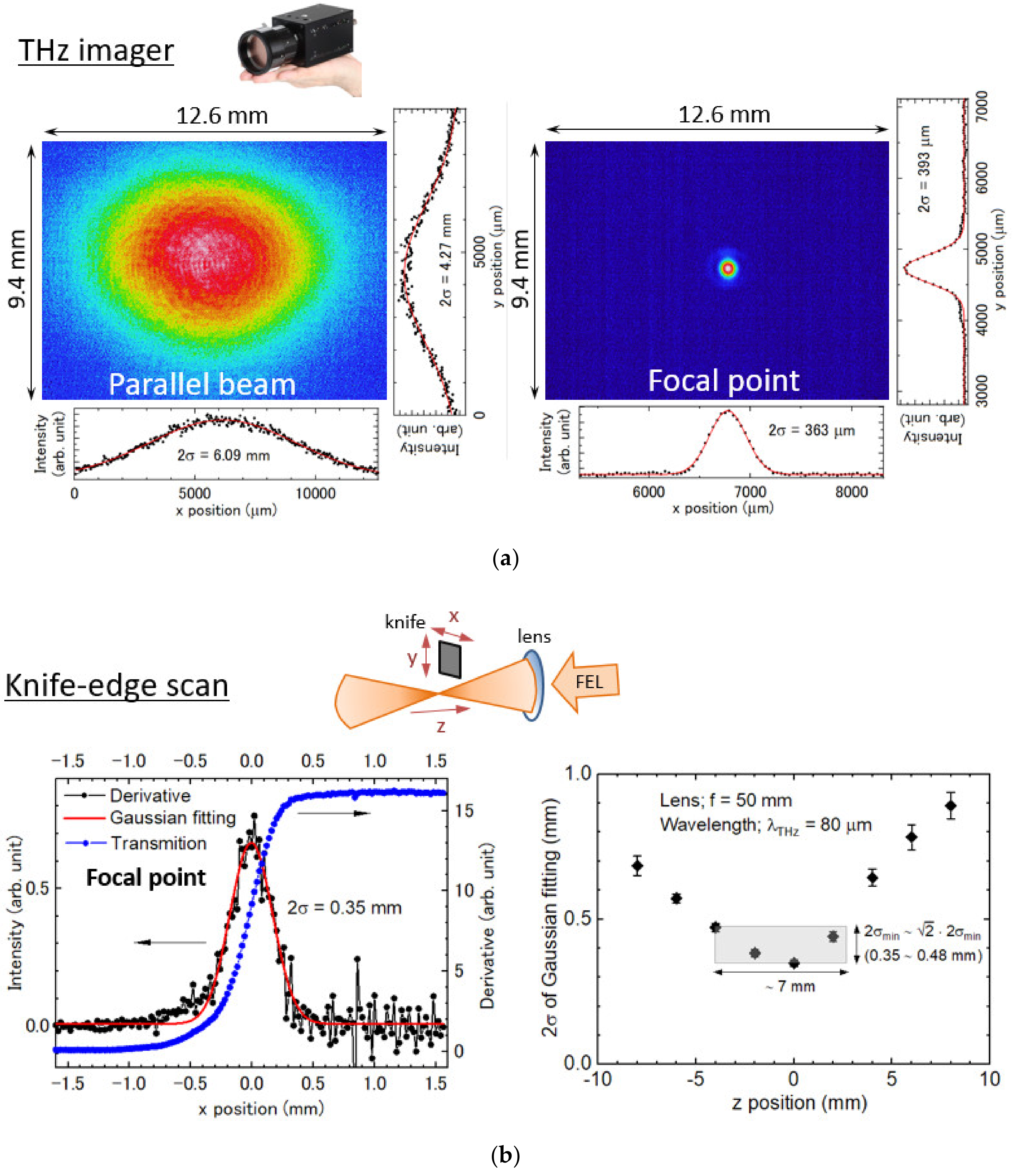
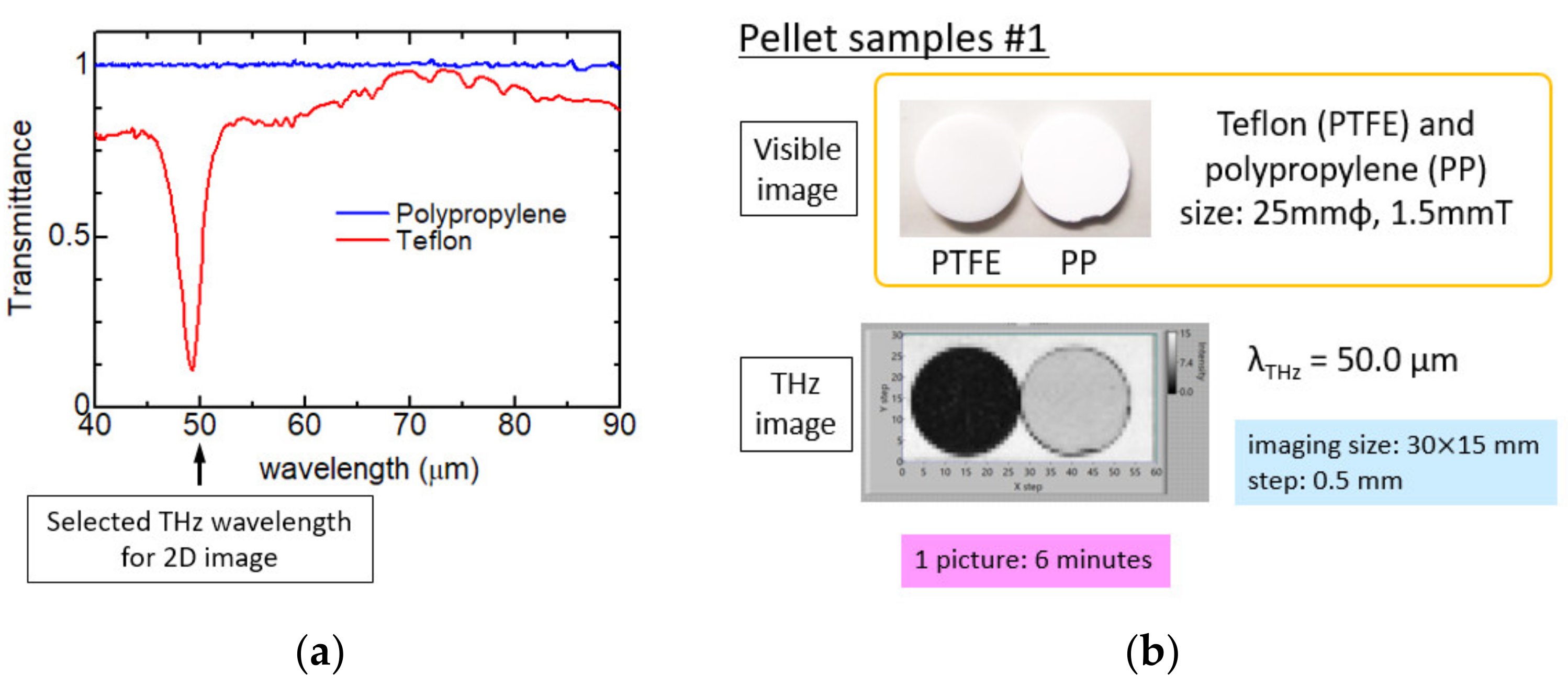
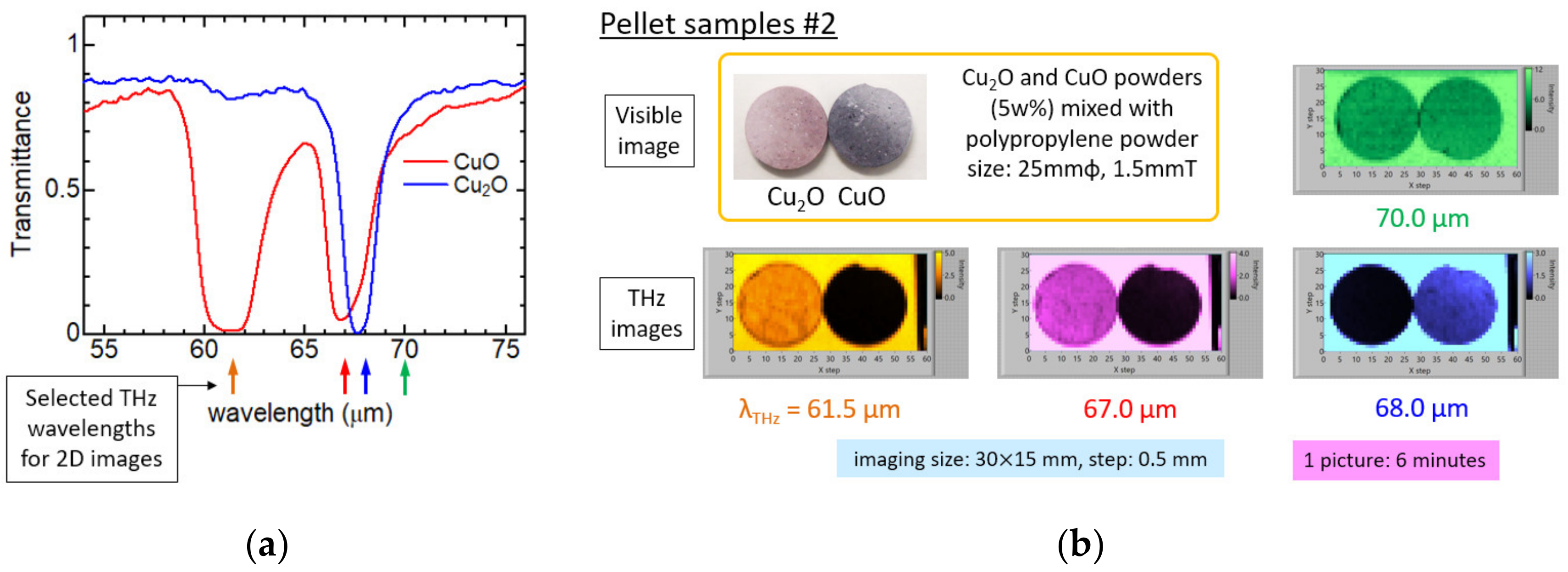

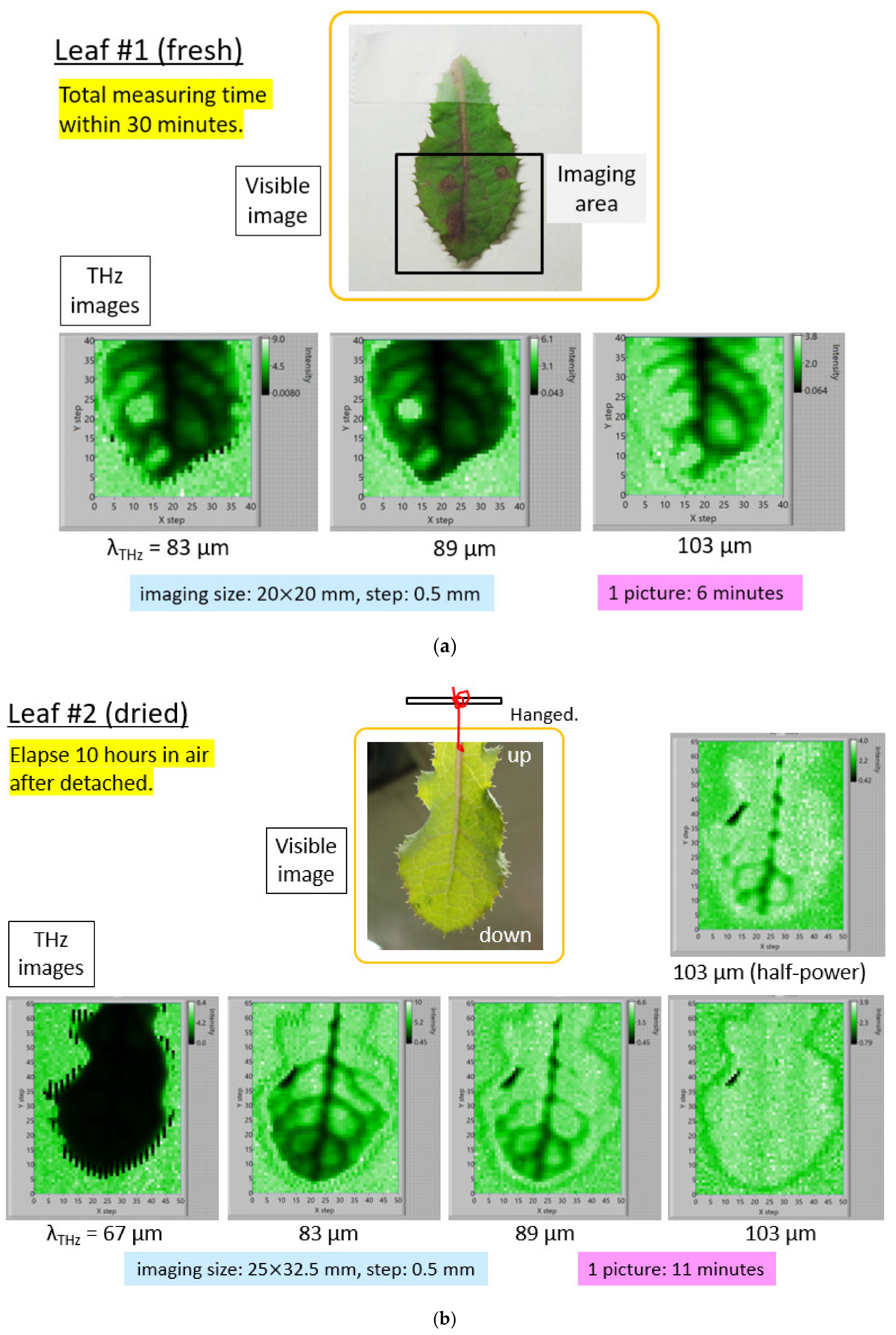
© 2020 by the authors. Licensee MDPI, Basel, Switzerland. This article is an open access article distributed under the terms and conditions of the Creative Commons Attribution (CC BY) license (http://creativecommons.org/licenses/by/4.0/).
Share and Cite
Irizawa, A.; Fujimoto, M.; Kawase, K.; Kato, R.; Fujiwara, H.; Higashiya, A.; Macis, S.; Tomarchio, L.; Lupi, S.; Marcelli, A.; et al. Spatially Resolved Spectral Imaging by A THz-FEL. Condens. Matter 2020, 5, 38. https://doi.org/10.3390/condmat5020038
Irizawa A, Fujimoto M, Kawase K, Kato R, Fujiwara H, Higashiya A, Macis S, Tomarchio L, Lupi S, Marcelli A, et al. Spatially Resolved Spectral Imaging by A THz-FEL. Condensed Matter. 2020; 5(2):38. https://doi.org/10.3390/condmat5020038
Chicago/Turabian StyleIrizawa, Akinori, Masaki Fujimoto, Keigo Kawase, Ryukou Kato, Hidenori Fujiwara, Atsushi Higashiya, Salvatore Macis, Luca Tomarchio, Stefano Lupi, Augusto Marcelli, and et al. 2020. "Spatially Resolved Spectral Imaging by A THz-FEL" Condensed Matter 5, no. 2: 38. https://doi.org/10.3390/condmat5020038
APA StyleIrizawa, A., Fujimoto, M., Kawase, K., Kato, R., Fujiwara, H., Higashiya, A., Macis, S., Tomarchio, L., Lupi, S., Marcelli, A., & Suga, S. (2020). Spatially Resolved Spectral Imaging by A THz-FEL. Condensed Matter, 5(2), 38. https://doi.org/10.3390/condmat5020038







